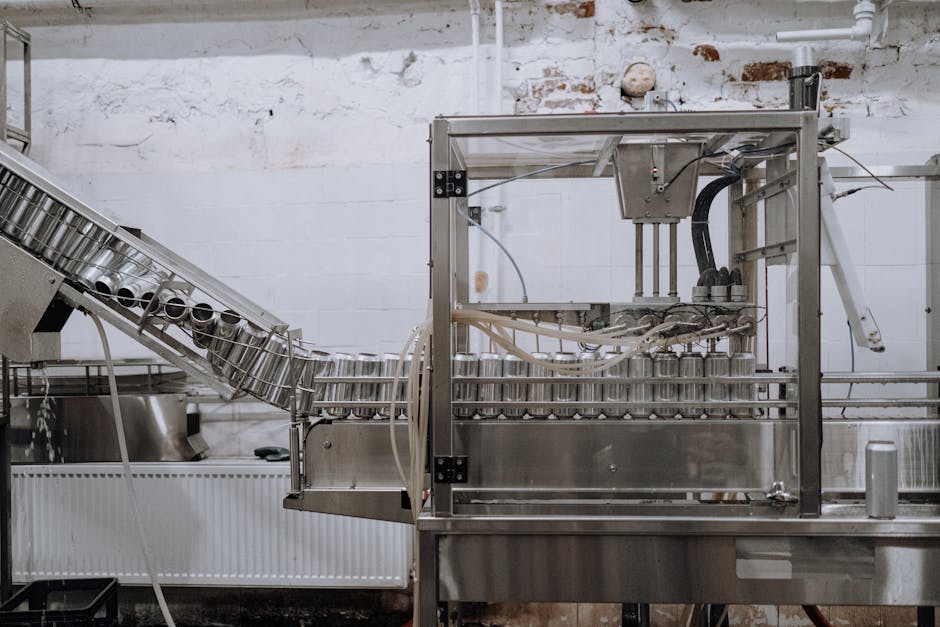Case Studies in Efficiency: Success Stories From the Warehouse Floor
Time is money, and nowhere is this truer than on the warehouse floor. You seek the freedom to move quickly and adapt to change, and you know efficiency is your ticket there.
Dive into these case studies that showcase how fellow pioneers in the warehousing industry have reaped the rewards of streamlined inventory management, automated solutions, and optimised spatial flow.
Discover how the principles of lean management and the power of data analytics have liberated operations from the shackles of waste and delay.
So, take the reins, learn from these success stories, and let them guide you to craft a more efficient, more productive warehouse environment that alines with your aspirations for liberty in logistics.
Key Takeaways
- Cycle counting and demand forecasting improve inventory accuracy and identify discrepancies quickly.
- Automated solutions, such as robotic picking systems, reduce operational costs and minimise the risk of human error.
- Optimising layout and flow through strategic space utilisation and traffic pattern analysis enhances productivity.
- Implementing lean principles and harnessing data analytics drive continuous improvement, increase efficiency, and enable informed decision-making.
Streamlining Inventory Management

In your quest for warehouse optimisation, streamlining inventory management is the cornerstone upon which productivity and accuracy rest. The meticulous process of cycle counting serves as a pivotal element in this undertaking. Unlike traditional inventory audits, cycle counting doesn’t require a halt in operations, ensuring you maintain momentum while verifying stock levels. This targeted approach not only bolsters accuracy but also pinpoints discrepancies swiftly, enabling corrective measures that don’t impede your warehouse’s flow.
Coupled with cycle counting is the strategic practise of demand forecasting. By meticulously analysing past data and market trends, you can predict future inventory needs with remarkable precision. This foresight allows you to adjust stock levels proactively, reducing instances of overstocking or stockouts that could paralyse your operations. It’s not just about having enough inventory; it’s about having the right inventory at the right time.
Adopting these practises requires a keen eye for detail and a commitment to continuous improvement. But the rewards are substantial: you’ll achieve a streamlined operation that not only meets demand with ease but also empowers you with the freedom to focus on growth and innovation.
Embrace these strategies, and watch your warehouse transform into a model of efficiency and reliability.
Leveraging Automated Solutions

You’ll witness a significant uptick in productivity when you integrate automated solutions into your warehouse operations. The transformation isn’t just about speed; it’s about precision and consistency. Consider robotic picking systems: they don’t tyre, they don’t falter, and they work with a relentless pace that human hands struggle to match. By delegating repetitive tasks to robots, you free up your workforce to focus on more complex, value-added activities.
Energy-saving machinery plays a crucial role in this modernisation. Not only do these innovations bolster efficiency, but they also aline with a greater good – the pursuit of sustainability. By investing in such technology, you’re not just cutting costs; you’re also reducing your carbon footprint, a liberty that resonates with the forward-thinking ethos of your clientele.
Consider the following benefits:
- Reduced Operational Costs: Automating tasks lowers the expense tied to manual labour and error correction.
- Enhanced Accuracy: Automation minimises the risk of human error, ensuring orders are processed correctly the first time.
- Increased Capacity: Automation allows for a 24/7 operation without the constraints of human work schedules.
Embracing automation paves the way for a more strategic warehouse environment.
Now, let’s turn our attention to how optimising layout and flow can further revolutionise your operations.
Optimising Layout and Flow

After integrating automated systems, your next step is to refine your warehouse’s layout and flow to further boost operational efficiency.
Strategic space utilisation isn’t just about fitting more items into a finite area; it’s about smart allocation that streamlines processes. Take a hard look at your storage configurations and aisle widths—are they facilitating maximum productivity? Adjusting shelf heights and positioning can drastically impact the ease of access and the speed at which items are picked and packed.
Examine your traffic patterns with a critical eye. Inefficiencies often hide in the daily movements of your workforce and machinery. Are there frequent bottlenecks where staff or equipment get held up? Maybe it’s time to rethink the placement of high-demand inventory to minimise travel time. Consider a layout that allows for unobstructed flow and quick turnarounds, especially in areas that handle receiving and shipping.
Your goal is to create a dynamic space that adapts to changing demands without sacrificing safety or accuracy. This freedom of movement isn’t just a perk—it’s a necessity for staying competitive.
Implementing Lean Principles

Refining your warehouse operations further, implementing lean principles can transform your space into a model of efficiency by eliminating waste in every form. This strategic approach focuses on waste reduction and continuous improvement, freeing your business from the shackles of inefficiency and unnecessary costs.
- Slash downtime by streamlining processes, ensuring your team operates like a well-oiled machine.
- Boost morale with a clean and organised environment that empowers employees to take pride in their workspace.
- Skyrocket productivity through optimised systems that allow for quick, accurate order fulfilment.
By dissecting each step of your warehouse’s workflow, you identify non-value-adding activities. Strategically eliminate these to keep your operations lean and agile. Analyse inventory management to prevent overstocking, which ties up capital and space. Implement tools for real-time data analysis, fostering a culture of informed decision-making and proactive problem-solving.
Remember, lean isn’t a one-off project; it’s a philosophy of perpetual refinement. Each small adjustment contributes to a significant leap towards operational freedom. As you peel away layers of waste, you uncover the most streamlined version of your business, capable of adapting swiftly to market demands and customer needs.
Lean principles not only enhance efficiency but also pave the way for innovation and growth.
Harnessing Data Analytics

While you implement lean principles, harnessing data analytics becomes key to measuring the efficacy of your warehouse operations and making informed decisions. By analysing vast datasets, you gain precise insights into inventory levels, order processing times, and shipment schedules, allowing for strategic adjustments that optimise workflow and reduce waste.
Diving deeper, data analytics empower predictive maintenance, a proactive approach ensuring equipment runs smoothly. This method predicts failures before they occur, scheduling repairs during downtime, thus preserving your operational freedom and avoiding unanticipated disruptions. By keeping machinery in peak condition, you not only extend its lifespan but also uphold consistent productivity levels.
Employe training is another area where data analytics make a significant impact. Detailed analysis of performance metrics can guide personalised training programmes, pinpointing specific skills that need improvement. This targeted approach fosters a capable workforce, ready to tackle challenges efficiently and with confidence. It’s about granting your team the autonomy to excel without micromanagement, as data-driven insights back their every move.
In essence, wielding data analytics transforms your warehouse into a dynamic environment where every decision is backed by evidence, every action is aimed at peak efficiency, and every team member is equipped to contribute to the collective success.
Frequently Asked Questions
How Does Employe Job Satisfaction Impact Efficiency in Warehouse Operations?
When you boost employe morale, job satisfaction rises, leading to increased efficiency. Lower turnover rates mean retaining skilled staff, which streamlines operations and empowers workers to perform with greater autonomy and excellence.
What Are the Environmental Benefits of Increasing Warehouse Efficiency?
By increasing warehouse efficiency, you’ll see a 20% reduction in energy use, leading to significant greenhouse gas reductions. Strategic planning ensures resources are smartly allocated, granting you the freedom to operate sustainably.
How Do Seasonal Fluctuations in Demand Affect the Implementation of Efficiency Practises?
You’ll need to adjust inventory scaling and refine demand forecasting to tackle seasonal demand shifts, ensuring you maintain freedom to meet customer needs without compromising your operational efficiency.
Can Small-Scale Warehouses Benefit From the Same Efficiency Strategies as Larger Operations?
Yes, you can apply similar efficiency strategies, focussing on inventory accuracy and space optimisation, to enhance your small-scale warehouse’s operations, granting you the freedom to compete with larger counterparts strategically.
How Do Safety Considerations and Regulations Intersect With Efforts to Improve Warehouse Efficiency?
You’re walking a tightrope when balancing safety and efficiency. Regulatory compliance and accident prevention are paramount, strategically alining with performance goals to ensure your warehouse operates like a well-oiled, unshackled machine.
Conclusion
In conclusion, you’ve seen how streamlining inventory sharpens efficiency, while automation accelerates productivity.
You’ve observed the strategic reshaping of layouts to streamline flow, and how lean principles cut waste, boosting performance.
You’ve grasped the power of data analytics to refine operations.
These case studies demonstrate that by analysing, strategizing, and refining details, you can transform your warehouse floor into a model of efficiency, paving the way for continued success in a competitive marketplace.
Contact us to discuss our services now!
